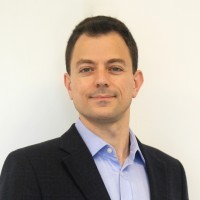- Video Library
- Ilan Uchitel, CAPS Medical - Minimally Invasive Treatment of Solid Tumors | LSI Europe '22
Ilan Uchitel, CAPS Medical - Minimally Invasive Treatment of Solid Tumors | LSI Europe '22

Ilan Uchitel
Ilan, CEO of CAPS Medical, has nearly 20 years of experience in the medical device and defense industries, having held executive management positions in multiple biomedical device companies in the fields of electrophysiology, invasive cardiology, and minimally invasive implantable maxillofacial solutions. He has served in leadership positions at OSSIO, Maxillent and Perifect, contributing to these companies’ continuous growth through a deep understanding of the medical device market, strategic product development, regulatory road-map building and execution, including CE and FDA compliance and successful product rollout/launch in US and European markets. Earlier, Ilan held R&D and project management positions in Unit 81, Israeli military intelligence’s elite technology unit, where during his tenure, his teams delivered numerous technologically and operationally complex projects, playing an important role in winning the top Israeli defense prizes. Ilan holds a BSc degree in mechanical engineering, an MSc in biomedical engineering, and an MBA – all received from Tel Aviv University.
Ilan Uchitel
Ilan, CEO of CAPS Medical, has nearly 20 years of experience in the medical device and defense industries, having held executive management positions in multiple biomedical device companies in the fields of electrophysiology, invasive cardiology, and minimally invasive implantable maxillofacial solutions. He has served in leadership positions at OSSIO, Maxillent and Perifect, contributing to these companies’ continuous growth through a deep understanding of the medical device market, strategic product development, regulatory road-map building and execution, including CE and FDA compliance and successful product rollout/launch in US and European markets. Earlier, Ilan held R&D and project management positions in Unit 81, Israeli military intelligence’s elite technology unit, where during his tenure, his teams delivered numerous technologically and operationally complex projects, playing an important role in winning the top Israeli defense prizes. Ilan holds a BSc degree in mechanical engineering, an MSc in biomedical engineering, and an MBA – all received from Tel Aviv University.

17011 Beach Blvd, Suite 500 Huntington Beach, CA 92647
714-847-3540© 2025 Life Science Intelligence, Inc., All Rights Reserved. | Privacy Policy







